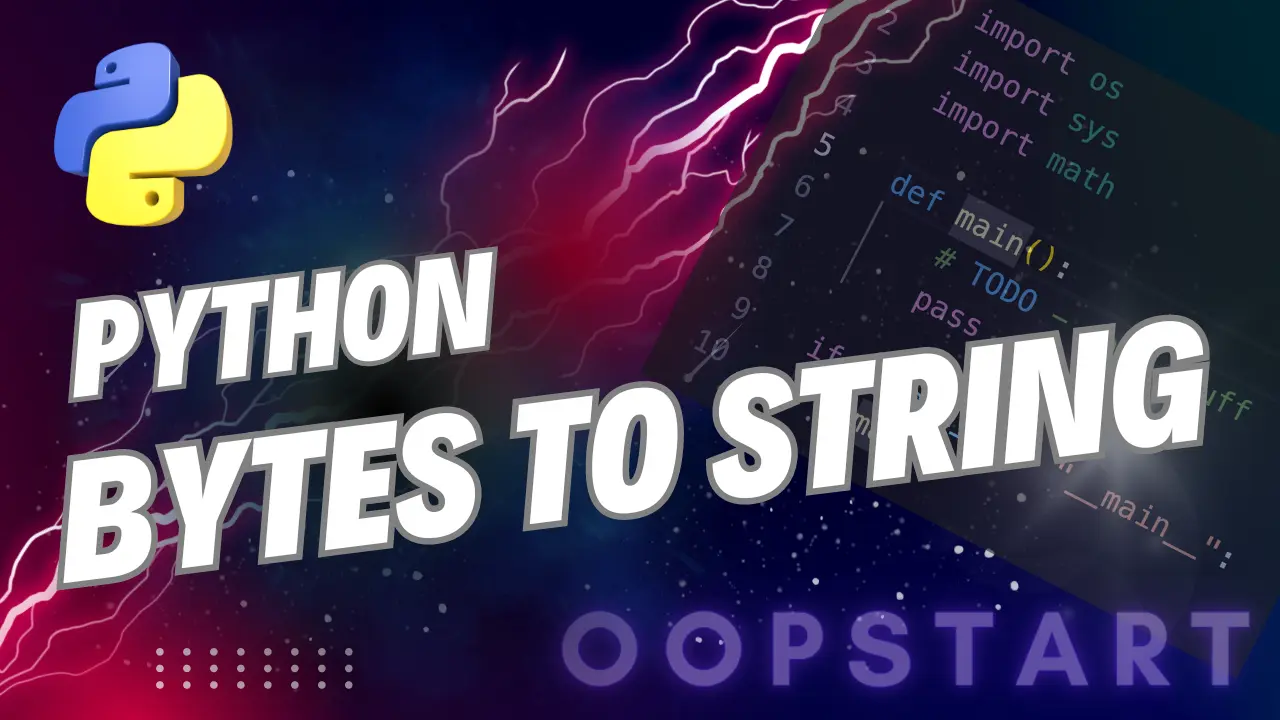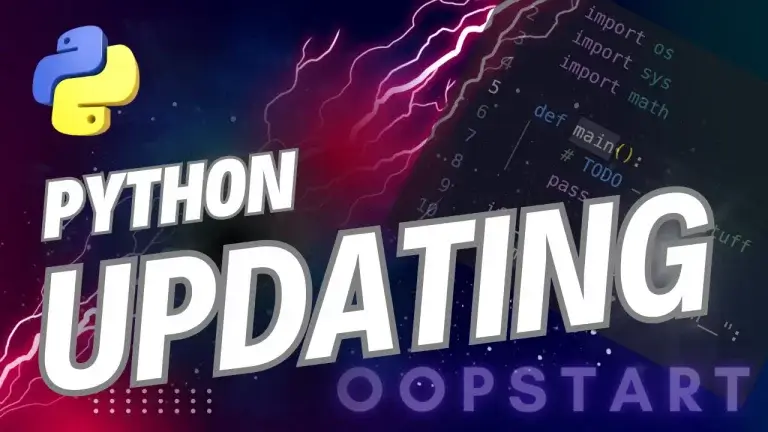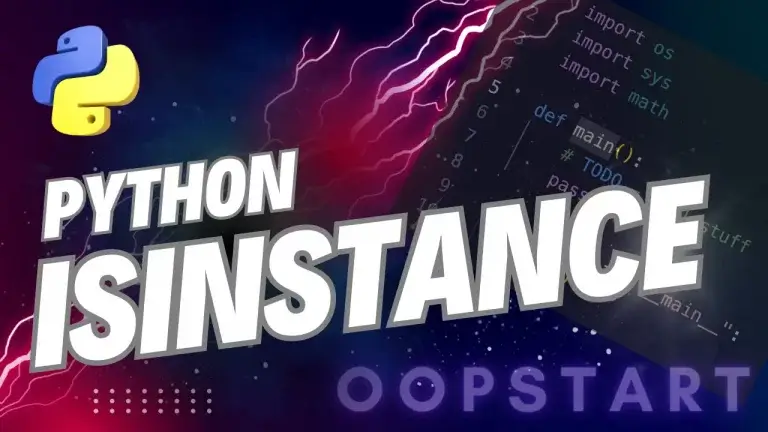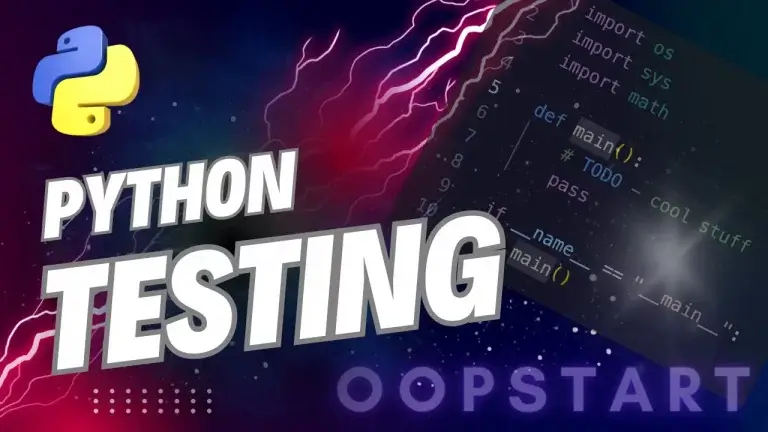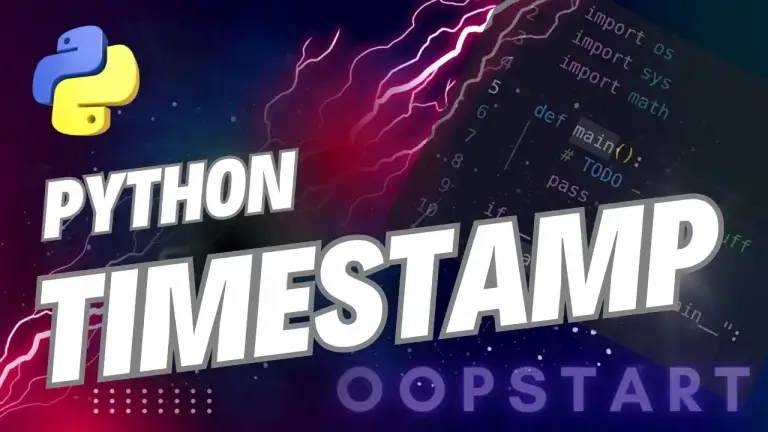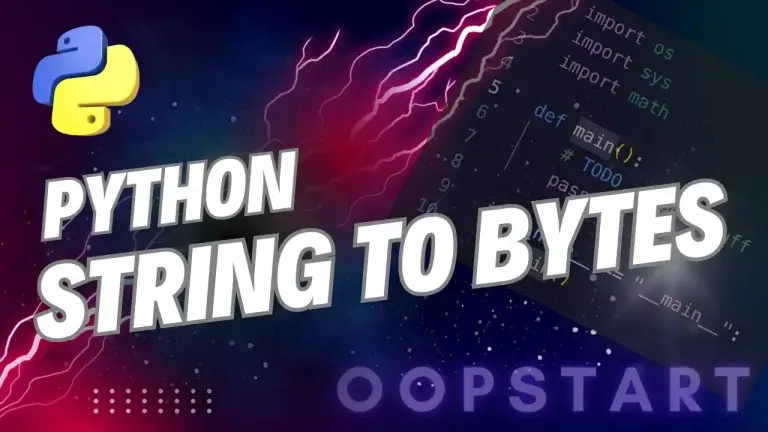Python Bytes to String: Ultimate Guide
There are many scenarios where you may need to execute a Python bytes to string operation, such as reading data from a file, processing network packets, or decoding encoded data. In Python, bytes and strings are two fundamental data types used for handling data. Bytes are raw binary data, while strings are sequences of Unicode characters. Converting bytes to strings is a common task in Python when handling data from various sources.
By the end of this guide, you’ll have a strong understanding of how to convert bytes to strings in Python and when to use specific methods based on your use case.
Table of Contents
What are Bytes and Strings in Python?
Bytes
- Bytes are a sequence of byte (8-bit) values. They are used to represent binary data and are commonly used in data storage, file handling, and network operations.
- In Python, bytes are represented with a
bprefix, followed by either a string or a sequence of byte values (integers between 0 and 255).
Example:
byte_data = b"hello"
print(byte_data) # Output: b'hello'
In the example above, b"hello" is a bytes object, not a string.
Strings
- Strings in Python are sequences of Unicode characters. Python 3 uses Unicode by default, which allows for the representation of a wide range of characters from different languages and symbols.
Example:
string_data = "hello"
print(string_data) # Output: hello
In this case, "hello" is a string, not bytes.
Why Convert Bytes to Strings?
There are several reasons why you might need to convert bytes to strings:
- Reading data from files: When you read binary data from files or receive data from a network, it is often in bytes. To process the data as human-readable text, you need to convert it to a string.
- Decoding encoded data: Text that has been encoded (such as UTF-8 or ASCII) needs to be decoded to convert it back into a string for processing.
- Handling web data: In web applications, data from requests or responses is often received as bytes and needs to be converted to strings for further processing.
How to Convert Bytes to String in Python
Method 1: Using the decode() Method
The most common and recommended way to convert bytes to a string in Python is by using the decode() method. This method converts a bytes object into a string using a specified encoding (such as UTF-8, ASCII, etc.).
Syntax:
string_data = bytes_data.decode(encoding="utf-8", errors="strict")
encoding: Specifies the encoding used to decode the bytes (e.g., UTF-8, ASCII). UTF-8 is the default encoding.errors: Specifies how to handle encoding errors. Common options include:strict: Raise an error if decoding fails (default).ignore: Ignore invalid bytes.replace: Replace invalid bytes with a replacement character (usually�).
Example: Decoding Bytes to String
byte_data = b"hello world"
string_data = byte_data.decode("utf-8")
print(string_data) # Output: hello world
In this example, the bytes b"hello world" are decoded into the string "hello world" using the UTF-8 encoding.
Example: Handling Decoding Errors
byte_data = b"hello \x80 world"
# Decoding with strict error handling (raises an exception)
try:
string_data = byte_data.decode("utf-8")
except UnicodeDecodeError as e:
print("Decoding Error:", e)
# Decoding with replace error handling (replaces invalid byte)
string_data = byte_data.decode("utf-8", errors="replace")
print(string_data) # Output: hello � world
In this example, an invalid byte (\x80) is present. When decoding with "strict", an error is raised, but using "replace", the invalid byte is replaced with the replacement character (�).
Method 2: Using the str() Function
You can also convert bytes to strings using the str() function, but this method is not as flexible as decode() because it requires you to specify the encoding explicitly using the encoding argument.
Syntax:
string_data = str(bytes_data, encoding="utf-8", errors="strict")
This method is essentially a shorthand for calling decode() on the bytes object.
Example:
byte_data = b"python"
string_data = str(byte_data, encoding="utf-8")
print(string_data) # Output: python
Although this method works, decode() is generally preferred for clarity and flexibility.
Method 3: Using codecs.decode()
The codecs module provides the decode() function, which can also be used to convert bytes to strings. This method is useful when you want to perform encoding and decoding operations on a broader range of data types.
Syntax:
import codecs
string_data = codecs.decode(bytes_data, encoding="utf-8", errors="strict")
Example:
import codecs
byte_data = b"example"
string_data = codecs.decode(byte_data, "utf-8")
print(string_data) # Output: example
While the codecs module provides additional functionality, using the bytes.decode() method is simpler for most use cases.
Practical Use Cases for Converting Bytes to Strings
1. Reading Binary Data from Files
When reading a binary file, such as an image or a compressed file, the data is often in bytes. If the file contains text data that needs to be processed, you can convert the bytes to a string.
Example:
# Reading binary data from a file and converting it to a string
with open("file.txt", "rb") as file:
byte_data = file.read()
string_data = byte_data.decode("utf-8")
print(string_data)
2. Handling Network Data
In network programming, data sent and received through sockets or HTTP requests is often in bytes. To process this data as text, you need to convert it from bytes to a string.
Example:
import socket
# Receive bytes from a socket connection
sock = socket.socket(socket.AF_INET, socket.SOCK_STREAM)
sock.connect(("example.com", 80))
sock.send(b"GET / HTTP/1.1\r\nHost: example.com\r\n\r\n")
response = sock.recv(4096) # Response in bytes
string_response = response.decode("utf-8")
print(string_response)
3. Decoding JSON or XML Data
APIs often return JSON or XML data in byte format. Before processing the data, it must be converted to a string.
Example:
import json
# Assume we receive JSON data in bytes
byte_data = b'{"name": "Alice", "age": 30}'
# Convert bytes to string
json_string = byte_data.decode("utf-8")
# Parse JSON string
data = json.loads(json_string)
print(data) # Output: {'name': 'Alice', 'age': 30}
Best Practices for Converting Bytes to Strings
1. Always Specify the Encoding
When converting bytes to strings, it’s important to specify the correct encoding (e.g., UTF-8, ASCII) to ensure accurate decoding. If the wrong encoding is used, you might encounter errors or incorrect output.
2. Handle Decoding Errors Gracefully
When working with external data, decoding errors are common. Use the errors parameter to handle these errors gracefully, either by ignoring invalid bytes or replacing them with a placeholder.
3. Use decode() for Flexibility
For most use cases, the decode() method on bytes objects is the preferred method for converting bytes to strings due to its flexibility in handling encoding and error handling.
Common Pitfalls to Avoid
1. Not Handling Non-UTF-8 Encodings
By default, many systems and libraries use UTF-8 encoding, but not all data is encoded this way. Be mindful of the encoding used in the data source and specify the correct encoding when decoding.
Example:
# Incorrect decoding (assuming UTF-8, but data is in Latin-1)
byte_data = b'\xe9'
try:
string_data = byte_data.decode("utf-8")
except UnicodeDecodeError:
print("Decoding failed")
# Correct decoding (using Latin-1 encoding)
string_data = byte_data.decode("latin-1")
print(string_data) # Output: é
2. Forgetting to Convert Back to Bytes
If your application expects bytes after processing, you’ll need to convert the string back to bytes using encode() before sending or saving the data.
Example:
string_data = "hello
world"
byte_data = string_data.encode("utf-8") # Convert back to bytes
Summary of Key Concepts
- Bytes are sequences of binary data, while strings are sequences of Unicode characters.
- To convert bytes to strings, use the
decode()method, specifying the correct encoding (e.g., UTF-8). - The
str()function and thecodecs.decode()method can also be used, butdecode()on bytes is the most flexible option. - Always handle decoding errors with the
errorsparameter to prevent exceptions when processing external data. - Common use cases include reading binary files, handling network data, and decoding API responses.
Exercises
- Basic Conversion: Write a function that takes a bytes object as input and returns the decoded string using UTF-8 encoding. Handle any decoding errors gracefully.
- File Reading: Create a Python script that reads binary data from a file, converts it to a string, and prints the contents.
- Network Response Handling: Write a Python script that sends an HTTP GET request using sockets, receives the response in bytes, converts it to a string, and prints the HTTP headers.
By mastering byte-to-string conversion in Python, you’ll be equipped to handle various data processing tasks in applications ranging from file handling to web and network communication. Let me know if you have further questions or need additional examples!
Check out our FREE Learn Python Programming Masterclass to hone your skills or learn from scratch.
The course covers everything from first principles to Graphical User Interfaces and Machine Learning
You can browse the official Python documentation on working with bytes here.
FAQ
Q1: What is the difference between decode() and str() when converting bytes to a string?
A1: Both decode() and str() can convert bytes to a string, but they are used differently:
decode()is a method on the bytes object itself and allows you to specify the encoding directly. It is the preferred method for converting bytes to strings.str()can also convert bytes to strings, but you must pass the encoding explicitly. It is more commonly used to create string representations of other data types.
Example:
# Using decode()
byte_data = b"hello"
string_data = byte_data.decode("utf-8")
print(string_data) # Output: hello
# Using str()
string_data = str(byte_data, "utf-8")
print(string_data) # Output: hello
Q2: What happens if I use the wrong encoding while decoding bytes?
A2: If you use the wrong encoding, Python may raise a UnicodeDecodeError if it encounters byte sequences that do not match the expected encoding. This can also result in incorrect or unreadable output if the encoding is not compatible.
Example:
byte_data = b'\xe9'
try:
# Incorrect decoding (UTF-8, but the bytes are Latin-1 encoded)
string_data = byte_data.decode("utf-8")
except UnicodeDecodeError as e:
print(f"Decoding Error: {e}")
# Correct decoding with Latin-1 encoding
string_data = byte_data.decode("latin-1")
print(string_data) # Output: é
Q3: What is the difference between encode() and decode()?
A3:
encode()is used to convert a string into bytes using a specific encoding (e.g., UTF-8, ASCII).decode()is used to convert bytes into a string using a specific decoding scheme.
In short:
encode(): String → Bytesdecode(): Bytes → String
Example:
# Encoding a string to bytes
string_data = "hello"
byte_data = string_data.encode("utf-8")
# Decoding bytes back to a string
decoded_string = byte_data.decode("utf-8")
print(decoded_string) # Output: hello
Q4: Can I convert bytes to a string without knowing the encoding?
A4: If the encoding is unknown, converting bytes to a string can be challenging because there’s no guaranteed way to automatically detect the encoding. However, libraries like chardet or charset-normalizer can be used to guess the encoding. These libraries analyze byte patterns to determine the most likely encoding.
Example using chardet:
import chardet
byte_data = b'\xe9\x20\xe9'
result = chardet.detect(byte_data)
encoding = result['encoding']
print(encoding) # Output: 'ISO-8859-1' or another encoding
# Now decode using the detected encoding
string_data = byte_data.decode(encoding)
print(string_data)
Q5: How do I convert a string back into bytes?
A5: You can convert a string back into bytes using the encode() method. This is often done after manipulating or processing the string, especially when working with network or file data that requires a byte format.
Example:
string_data = "hello"
byte_data = string_data.encode("utf-8")
print(byte_data) # Output: b'hello'
Q6: What is the default encoding in Python if I don’t specify one?
A6: The default encoding in Python for converting between bytes and strings is UTF-8. If you don’t specify an encoding, Python will use UTF-8 when encoding or decoding.
Example:
byte_data = b"hello"
string_data = byte_data.decode() # Decoded as UTF-8 by default
print(string_data) # Output: hello
Q7: Can I convert only a portion of a bytes object to a string?
A7: Yes, you can convert only a portion of a bytes object by slicing the bytes object and then decoding the sliced portion.
Example:
byte_data = b"hello world"
# Convert only the first 5 bytes (b"hello")
string_data = byte_data[:5].decode("utf-8")
print(string_data) # Output: hello
Q8: What encoding should I use for different languages and special characters?
A8:
- UTF-8 is the most common and recommended encoding because it supports a wide range of characters from different languages, including special symbols.
- For languages that use only a limited character set (like English), ASCII may be sufficient.
- For certain regional encodings (like ISO-8859-1 for Western European languages), other encodings might be used, but UTF-8 is generally preferred for its flexibility and widespread support.
Q9: What’s the difference between a bytes literal (b"string") and a string literal ("string")?
A9:
- A bytes literal (e.g.,
b"hello") represents raw binary data and is immutable like a string, but it consists of byte values. - A string literal (e.g.,
"hello") represents a sequence of Unicode characters and is also immutable.
To convert between them, use encode() (string to bytes) or decode() (bytes to string).
Q10: Can I use the decode() method on a string?
A10: No, the decode() method is only available on bytes objects. To convert a string to bytes, you would use the encode() method. The decode() method is specifically for converting bytes into a string, not the other way around.

